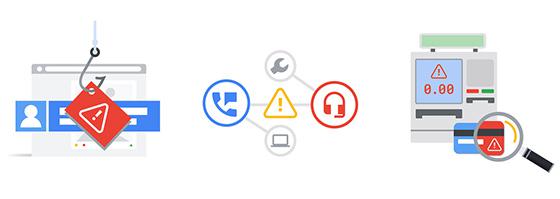Google Blocked 100 Bad Ads Per Second In 2019
- by Laurie Sullivan @lauriesullivan, April 30, 2020
For Google, building its business on trust -- from online information to ad serving to data protection and privacy -- has become a top priority.
On Thursday, the company released its 2019 transparency report, outlining the steps the company has taken to stop fraudulent online activities to protect advertisers, publishers and those searching for information.
In 2019, Google blocked and removed 2.7 billion bad ads -- which amounts to 10 million ads per day, more than 5,000 bad ads per minute or 100 per second -- and suspended nearly 1 million advertiser accounts for policy violations.
On the publisher side, Google terminated over 1.2 million accounts, and removed ads from over 21 million web pages that are part of its publisher network for violating its policies.
Since the beginning of the COVID-19 outbreak, Google monitored advertiser behavior to protect advertisers, publishers and users from fraudulent ads that were looking to take advantage of the crisis.
After seeing a sharp spike in fraudulent ads for products such as face masks, the company created a dedicated COVID-19 task force and improved in its detection of trends and patterns.
Scammers always look for new ways to make money off gaming the system and to avoid getting caught. In 2019, Google terminated more than 1 million accounts for violating its policies.
One bad account can run thousands of ads, so account-level action is important. Last year, Google created a phishing task force to track and analyze current tactics that bad actors use to circumvent the systems and collect personal information from users.
Phishing ads range from exploiting those who are interested in cryptocurrency to others looking for information on passport renewals to ads leading users to fake bank websites.
Google found common behavior and trends in the ways that bad actors evade its systems, and taught its employees to improve technology and methods to stop them.
These efforts enabled Google to terminate more than 44,000 accounts and 21.6 million ads, cutting phishing ads in half. The company also removed more 44,000 advertiser accounts.
The financial services sector has experienced rapid change in the last five years as more consumers turn to online services rather than brick-and-mortar locations.
After identifying an increase in loan ads with misleading terms information, Google expanded on its personal loans policy to only allow ads to run that clearly state and outline all fees, risks, and benefits.
After identifying bad ads, Google doubled the number of ads removed in 2019, taking down 9.6 million personal loan ads -- doubling the number from 2018.
Behavioral patterns are a major part of how Google detects violations. The technology looks at traffic patterns, content, overall presentation on the web, and users to report sites that they believe are in violation.
While technology helps Google spot potential violations, the company also relies on humans to review ads, sites and accounts to ensure that they comply with policies now and in the future.
Sometimes bad actors create compliant accounts and ads and then shift strategies. Google analyzes the ad creative to determine whether it is working and whether it is offensive or honest, and to determine whether or not it carries malware.
Google also looks at the landing pages, so the company knows where each click on an ad takes the viewer and whether or not it meets policy standards.
For publishers, Google reviews content and traffic patterns on their site to determine whether the content is appropriate to monetize and whether people are interested in the ads enough to click.



